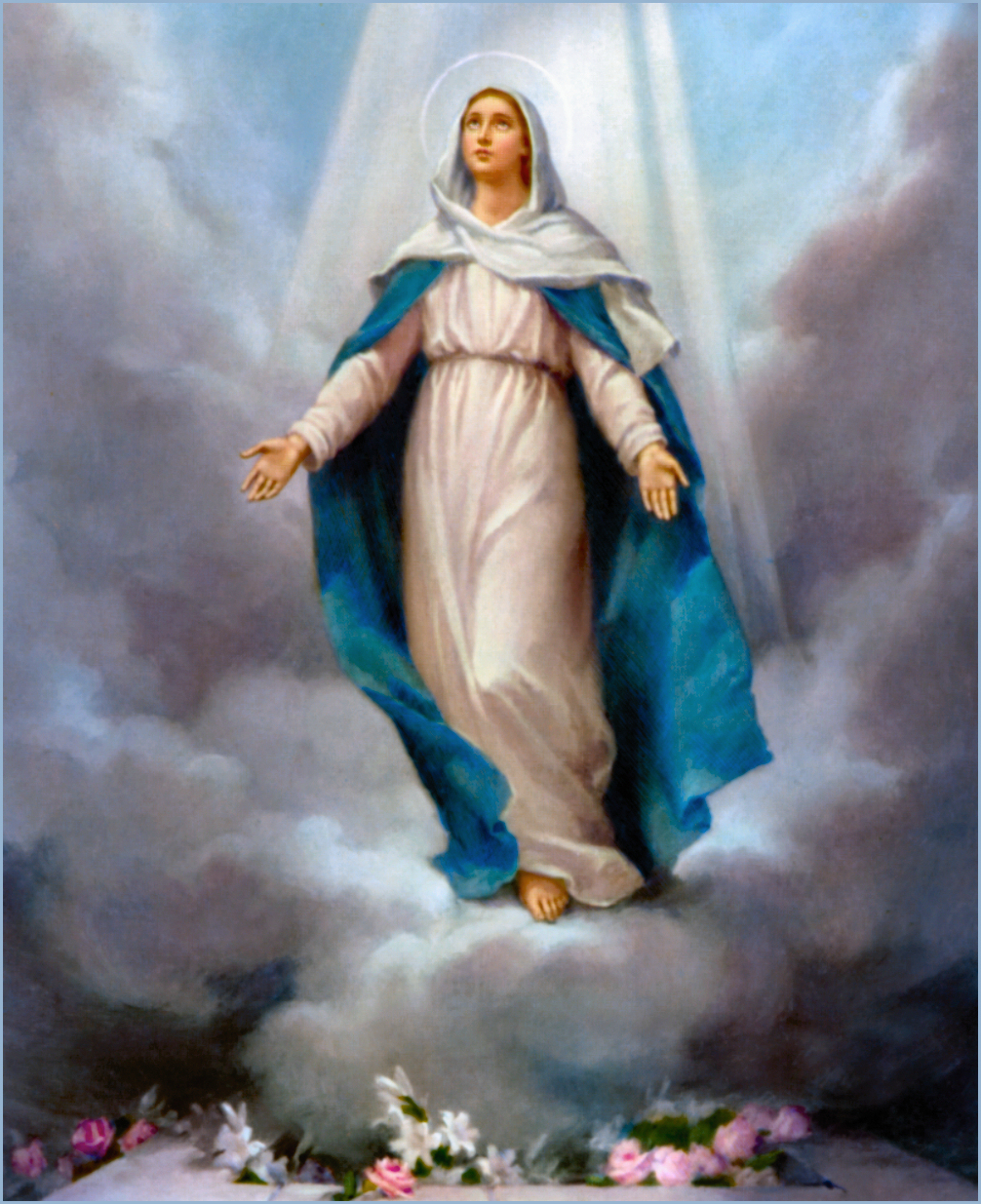
Our Lady of Assumption

The Assumption of the Virgin Mary also known as the Assumption into Heaven or the Falling Asleep of the Blessed Virgin Mary, according to the beliefs of the Catholic Church, was the bodily taking up of the Virgin Mary into Heaven at the end of her earthly life. Signifying this event she has been called Our Lady of Assumption
The Catholic Church teaches as dogma that the Virgin Mary “having completed the course of her earthly life, was assumed body and soul into heavenly glory”. This doctrine of Our Lady of Assumption was introduced by Pope Pius XII on November 1, 1950, in the apostolic constitution Munificentissimus Deus by exercising papal infallibility. While the Catholic Church and Eastern Orthodox Church believe in the Dormition of the Theotokos, which is the same as the Assumption, the alleged physical death of Mary has not been dogmatically defined.
In Munificentissimus Deus (item 39) Pope Pius XII pointed to the Book of Genesis (3:15) as scriptural support for the dogma in terms of Mary’s victory over sin and death as also reflected in 1 Corinthians 15:54: “then shall come to pass the saying that is written, Death is swallowed up in victory”.
In the churches, the Our Lady of Assumption feast is a major day, commonly celebrated on August 15. In many countries the feast is also marked as a Holy Day of Obligation in the Roman Catholic Church.
In some versions of the story the event is said to have taken place in Ephesus, in the House of the Virgin Mary, although this is a much more recent and localized tradition. The earliest traditions all locate the end of Mary’s life in Jerusalem. By the 7th century a variation emerged, according to which one of the apostles, often identified as St Thomas, was not present at the death of Mary, but his late arrival precipitates a reopening of Mary’s tomb, which is found to be empty except for her grave clothes. In a later tradition, Mary drops her girdle down to the apostle from heaven as testament to the event. This incident is depicted in many later paintings of Our Lady of Assumption.